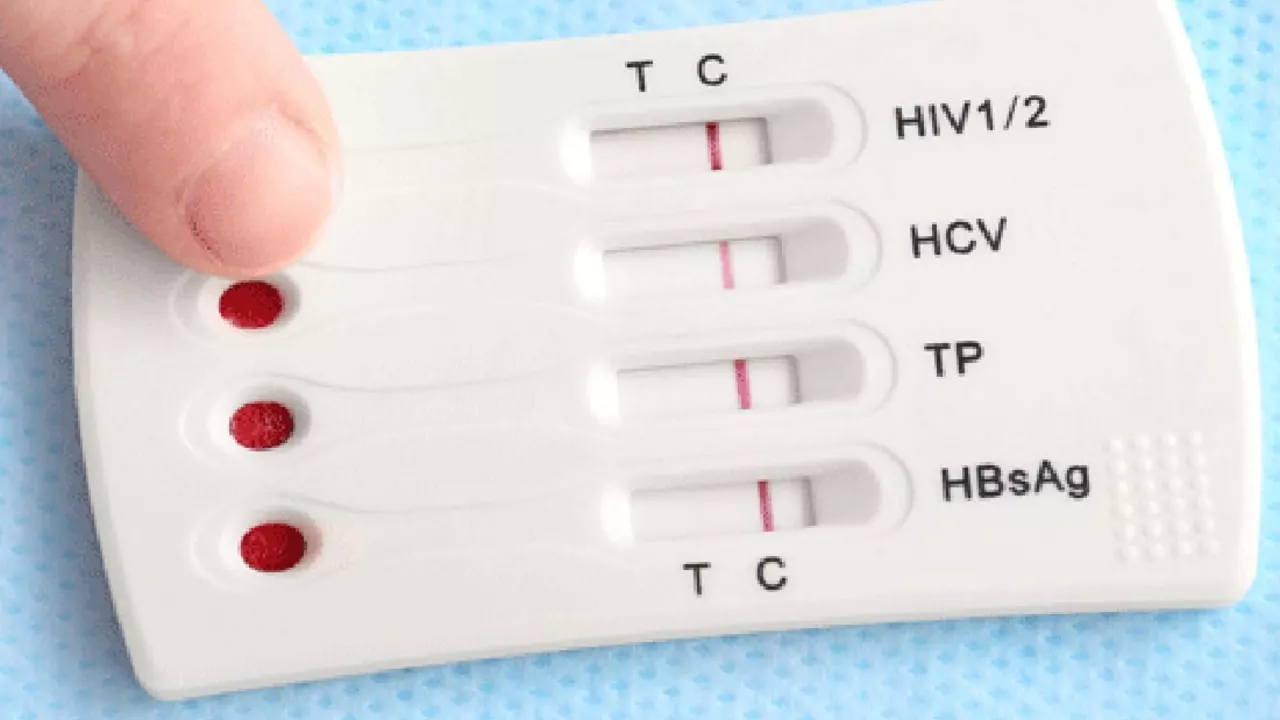Introduction: HIV-1 and HIV-2
As someone who has been researching and writing about HIV for years, I have come across a lot of misconceptions when it comes to understanding the differences between HIV-1 and HIV-2. Although both are strains of the Human Immunodeficiency Virus, they have distinct characteristics that affect transmission, progression, and treatment. Let's delve into these differences and learn why it is crucial to test for both types of HIV.
Origins and Prevalence of HIV-1 and HIV-2
The origins of HIV-1 and HIV-2 can be traced back to different regions of Africa, where they independently crossed over from their primate hosts to humans. HIV-1 is believed to have originated from Central Africa, while HIV-2 comes from West Africa. In terms of prevalence, HIV-1 is the most common strain, found in virtually all parts of the world. HIV-2, on the other hand, is primarily found in West Africa, with sporadic cases reported in other countries.
Transmission Rates: Comparing HIV-1 and HIV-2
Both HIV-1 and HIV-2 are transmitted through blood, semen, vaginal fluids, and breast milk. However, HIV-2 is less easily transmitted than HIV-1. Studies have shown that the rate of sexual transmission of HIV-2 is up to nine times lower than that of HIV-1. Additionally, mother-to-child transmission of HIV-2 is less frequent. This lower transmission rate is thought to be due to a lower concentration of the virus in bodily fluids in individuals infected with HIV-2.
Progression to AIDS: Key Differences
The progression to AIDS, or Acquired Immunodeficiency Syndrome, also differs between HIV-1 and HIV-2. People infected with HIV-2 tend to progress to AIDS more slowly, and some individuals may remain asymptomatic for their entire lives. Conversely, HIV-1 usually leads to AIDS within 10 years of infection if left untreated. The reasons behind this difference are not entirely understood, but it is believed to be related to differences in the immune response to the two viruses.
Diagnostic Testing for HIV-1 and HIV-2
Because of the similarities between HIV-1 and HIV-2, many diagnostic tests are designed to detect both types of the virus. However, some tests are specific to HIV-1, and may not accurately detect HIV-2. This is why it is crucial to use a testing method that can accurately identify both strains. If you are at risk for HIV or have been exposed to someone with HIV, it is essential to get tested for both types to ensure accurate diagnosis and treatment.
Antiretroviral Treatment: What Works for Both HIV Strains
Antiretroviral therapy (ART) is prescribed to individuals with HIV to help control the virus and prevent its progression to AIDS. Although many antiretroviral medications are effective against both HIV-1 and HIV-2, there are some differences in how the two strains respond to treatment. For example, HIV-2 is intrinsically resistant to non-nucleoside reverse transcriptase inhibitors (NNRTIs), a class of drugs commonly used to treat HIV-1. As a result, people with HIV-2 may require different drug regimens than those with HIV-1.
Importance of Regular Monitoring for Both HIV Types
Regular monitoring of your HIV status is essential for both HIV-1 and HIV-2 infections. This includes routine blood tests to check your viral load and CD4 count, which help assess the effectiveness of your treatment and the progression of the infection. By closely monitoring your HIV status and working with your healthcare provider, you can manage your condition and reduce the risk of complications associated with both HIV-1 and HIV-2.
Preventing the Spread of HIV-1 and HIV-2
Preventing the transmission of both HIV-1 and HIV-2 is crucial to reducing the global impact of HIV. This involves practicing safe sex, using barrier methods such as condoms, and getting tested regularly if you are at risk for HIV. Additionally, if you are living with HIV, adhering to your ART regimen can help reduce your viral load, making it less likely that you will transmit the virus to others.
The Importance of Public Awareness and Education
Increasing public awareness and understanding of the differences between HIV-1 and HIV-2 is critical to ensuring that people receive appropriate testing, treatment, and support. This includes educating the public about the origins, transmission rates, and progression of both HIV strains, as well as the importance of regular testing and prevention strategies. By spreading accurate information about HIV-1 and HIV-2, we can help reduce stigma, encourage testing, and improve the overall health and well-being of those affected by HIV.
Conclusion: Why Testing for Both HIV-1 and HIV-2 Matters
In conclusion, understanding the differences between HIV-1 and HIV-2 is essential for accurate diagnosis, effective treatment, and prevention of transmission. By testing for both strains of the virus, healthcare providers can ensure that individuals receive the appropriate care and support they need to manage their condition. As a society, we must continue to raise awareness and educate ourselves about HIV-1 and HIV-2 to reduce stigma and improve the lives of those affected by HIV.


Koltin Hammer
I've spent time in Ghana and Nigeria, and it's wild how little people outside West Africa know about HIV-2. It's not just a 'less common version' of HIV-1-it's a whole different beast biologically. The fact that it's less transmissible doesn't mean it's harmless. I've met people who've lived with HIV-2 for 30 years without ever needing meds, and others who developed complications way earlier. It's not about fear-it's about awareness. We treat all HIV like it's the same, and that's a mistake. The science is there, but the public health messaging? Still stuck in the '90s.
Phil Best
So let me get this straight... we have a virus that's 9x harder to catch, progresses slower, and doesn't respond to half the drugs we throw at it... and we still treat it like an afterthought? 🤡 I mean, if this was a new iPhone model with worse battery life, we'd be calling it a 'budget option.' But for a virus? Nah, let's just pretend it doesn't exist until it shows up in our backyard. Classic.
Parv Trivedi
In India, we rarely see HIV-2 cases, but I have read about it in medical journals. It is important that global health systems understand this difference. Many tests in low-resource areas only check for HIV-1. This can lead to false reassurance. We must improve testing protocols everywhere, not just in high-income countries. Knowledge is not a privilege-it is a right.
Vera Wayne
I just want to say, thank you for writing this. So many people think HIV is HIV, and that’s dangerous. I’ve had friends misdiagnosed because their doctor didn’t test for HIV-2. Please, if you’re getting tested, ask for both. It’s not hard, and it could save your life. Seriously.
Rodney Keats
Oh wow, another ‘educational’ post about HIV-2. Next you’ll tell us the moon landing was faked and that’s why we don’t have flying cars. 🙄
Laura-Jade Vaughan
OMG I JUST LEARNED SOMETHING NEW 😱 I didn’t know HIV-2 even existed! Like, I’ve been living in the US my whole life and no one ever mentioned this?? I’m gonna post this to my Insta story right now 📲✨ #HIVAwareness #HIV2IsReal #ScienceIsCool
Jennifer Stephenson
HIV-2 exists. Testing matters.
Segun Kareem
In Nigeria, we know HIV-2 is rare, but we also know it's there. My uncle was diagnosed with it in the 90s. Doctors didn’t know what to do. He survived because he didn’t panic, and he found a clinic that understood the difference. This isn’t just science-it’s survival. We need more clinics in Africa that can test for both. Not just in Lagos or Abuja. In the villages too.
Philip Rindom
I’ve been working in public health for a decade and honestly, I’ve seen way too many cases where HIV-2 got missed. It’s not that providers are lazy-it’s that the systems aren’t built for it. We need better training, better test kits, and better funding. This isn’t a niche issue. It’s a gap in the system that’s been ignored for too long.
Jess Redfearn
Wait so you’re saying some people have a different kind of HIV? Like… what if I got tested and they only found HIV-1 but I actually had HIV-2? Could I still spread it? Should I be worried? I mean I had sex with someone last year and now I’m scared. Can you just tell me what to do?
Ashley B
This is all a lie. HIV-2 doesn’t exist. It’s a government tool to sell more tests. They made up HIV-2 so they could charge you extra for ‘comprehensive’ testing. You think Big Pharma cares about your health? They care about your insurance. And your blood. And your data. And your kids’ future. This isn’t science-it’s a scam. Look up Project Blue Beam. They’re already testing HIV-2 in 5G towers. I know because I work for the CDC and I’m leaving this comment before they silence me.
Scott Walker
I live in Vancouver and we’ve had a few HIV-2 cases here from West African immigrants. It’s not common, but it’s real. I’ve seen how hard it is for people to get the right meds here because the pharmacists don’t know the difference. We need better education for frontline staff too. Not just doctors. Pharm techs, nurses, receptionists. Everyone. 🙏
Sharon Campbell
hiv2? sounds like a typo. like when you type hiv and mean hiv1. or maybe its just hiv but the virus got lazy. i mean who even cares anymore? we got prp and tdf and stuff. just take your pills and shut up.
sara styles
You think this is the whole story? You think HIV-2 is just some ‘less aggressive’ cousin? That’s what they told us about HIV-1 in 1985 too. They said it was slow, it was contained, it was only for ‘those people.’ Then it exploded. HIV-2 is just the quiet one. The one that waits. The one that evolves in the shadows while the world celebrates ‘progress’ with PrEP and viral load suppression. But here’s the truth: HIV-2 is mutating. It’s adapting. And when it does, it won’t be the slow one anymore. It’ll be the one that laughs while the vaccines fail. You think the CDC is tracking it? They’re not. They’re too busy chasing the next big drug. Wake up. This isn’t science. It’s a ticking time bomb with a West African accent.
Koltin Hammer
I’ve been reading all these replies and honestly? I’m glad someone finally brought this up. But I’ve got to say-Sharon, your comment about ‘just take your pills’? That’s the exact attitude that kills people. HIV-2 doesn’t respond to NNRTIs. If you’re on a standard regimen and you have HIV-2, you’re not being treated. You’re being misled. And Ashley? You’re not wrong to be suspicious of systems that ignore things, but this isn’t a conspiracy. It’s negligence. And negligence is just as deadly.